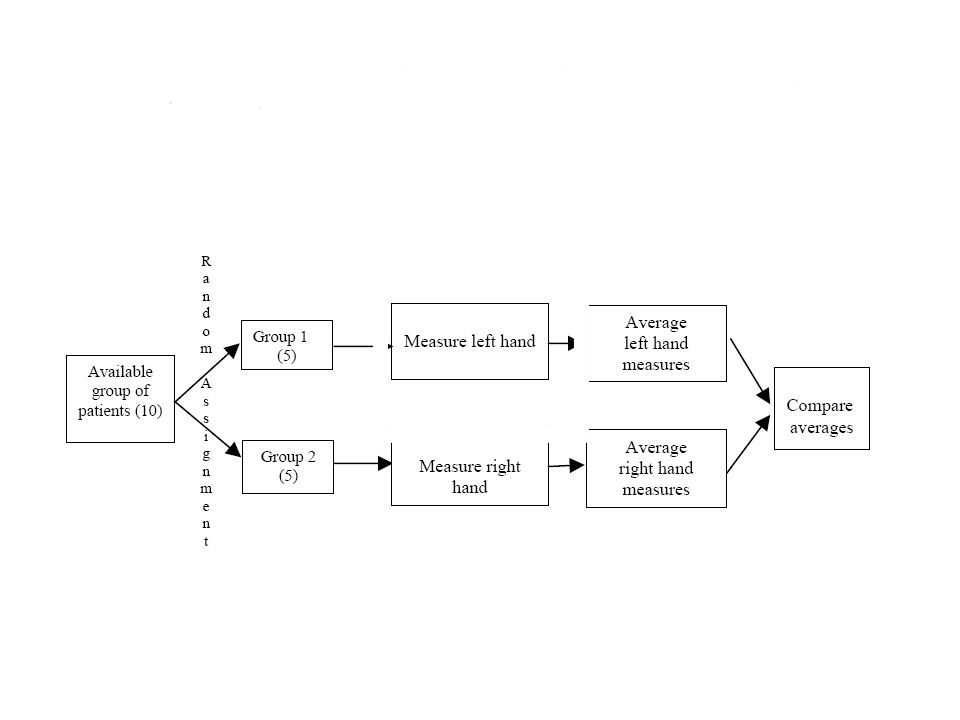Unit 5: Sampling and Experimentation
Introduction
- Population: The entire group of individuals or things that we are interested in.
- Sample: The part of the population that is actually studied
- Frame: List of members from which the sample is to be taken
- Sample survey: The process of collecting information from a sample
- Census: Process of collecting information from all the units in a population.
Experiments and Observational Studies
- Experiment: Planned activity that results in measurements
- Observational Study: An activity in which the experimenter observes the reaction among variables rather than creating them.
Methods for Sampling
Biased sampling: methods result in values that are systematically different from the population values or systematically favor certain outcomes.
- Judgemental sampling, samples of convenience, and volunteer samples
Simple random sample: A sample of n subjects selected in such a way that every possible sample of the same size n has the same chance of being chosen.
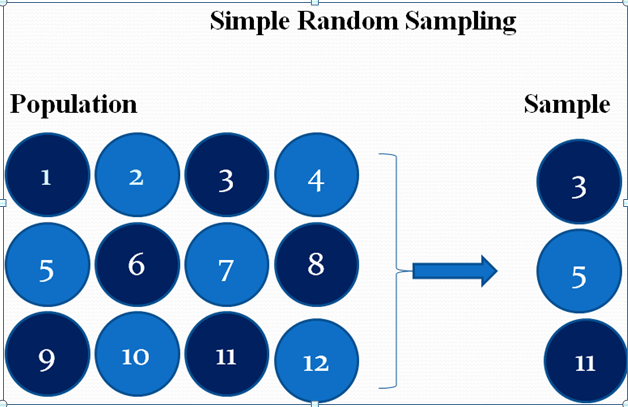
Systematic sample: A sample in which the researcher selects some starting point and then selects every kth element in the population.
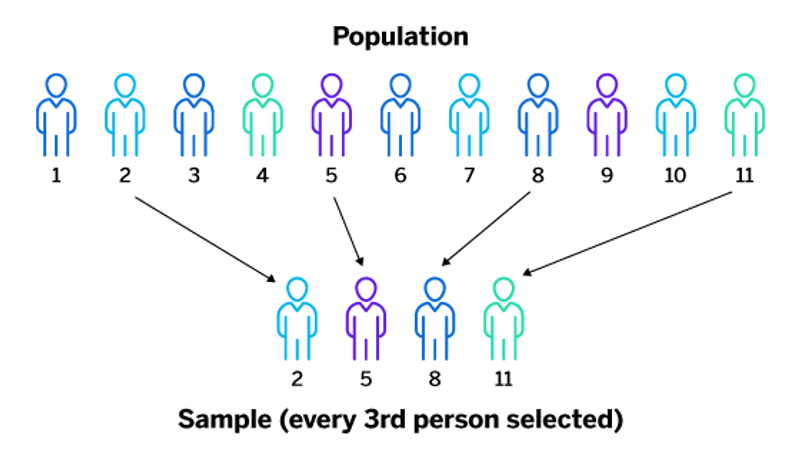
Stratified sample: A sample in which the researcher subdivides the population into at least two different subgroups (or strata), and then draws a sample from each subgroup.
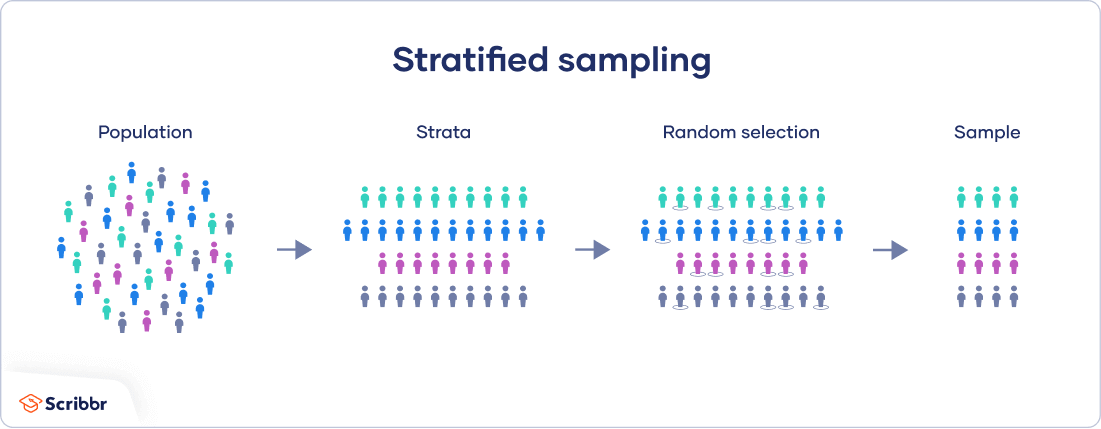
Cluster sample: A sample in which the researcher first divides the population into sections (or clusters), and then randomly selects all members from some of those clusters.
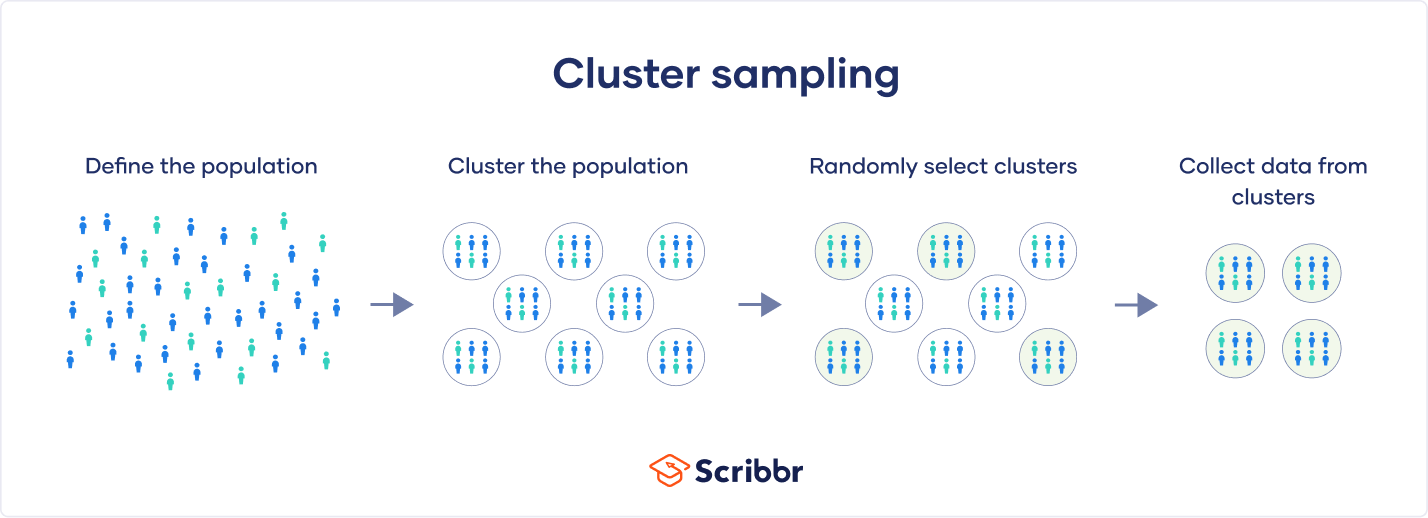
Convenience sample: A sample in which the researcher simply uses results that are very easy to get. This is not a valid sampling method and will likely result in biased data.
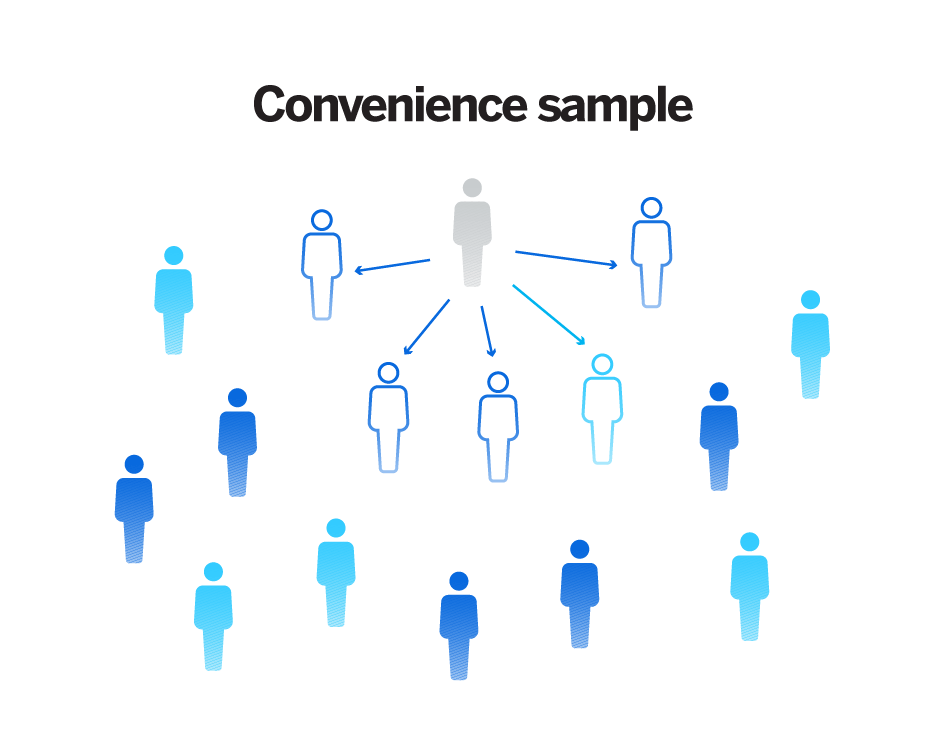
Sources of Bias in Sampling
- Sampling bias: the technique used to obtain the individuals to be in the sample tends to favor one part of the population over another
- Example→ A company wants to conduct a survey on their new product. They only send the survey to their existing customers who have already purchased the product, ignoring potential customers who have not yet purchased it. This results in sampling bias as the survey results will not accurately represent the opinions of the entire population.
- Nonresponse bias: when individuals selected to be in the sample who do not respond to a survey have different opinions from those who do.
- Example→ In a survey about political opinions, only those who strongly agree or disagree with a certain statement respond. This may lead to nonresponse bias as the opinions of those who are neutral or have a moderate stance are not represented in the results.
- Response bias: when answers on a survey do not reflect the true feelings of the respondent.
- Example→ In a survey about a new product, the questions are framed in a way that only positive responses are possible, leading to an overestimation of customer satisfaction.
Planning and Conducting Experiments
Terms and Concepts
- Dependent or response variable: The variable to be measured in the experiment
- Independent or explanatory variable: A variable that may explain the differences in responses
- Experimental Unit: This is the smallest unit of the population to which treatment is applied
- Confounding variable: A variable whose effect on the response cannot be separated from the effect of the explanatory variable.
- Factor: A variable whose effect on the response is of interest in the experiment
- Control group: Group of experimental units similar to all the other experimental units except that it is not given any treatment
- Example→ In an experiment testing the effectiveness of a new medication, a group of participants is randomly assigned to receive the medication while another group is given a placebo. The group receiving the placebo is the control group, allowing researchers to compare the results of the two groups and determine if the medication is truly effective.
- Placebo group: The control group receives a treatment that looks and feels similar to an experimental treatment but is expected to have no effect.
- Example→ In a clinical trial testing the efficacy of a new drug for treating insomnia, some participants were given a sugar pill instead of the actual medication. This group of participants who received the sugar pill is known as the control group or the group receiving the placebo.
Single-Blind and Double-Blind Experiments
Blinding technique: used in medical experiments to prevent such a bias
Single blind experiment: either the patient does not know which treatment he or she is receiving or the person measuring the patient’s reaction does not know which treatment is given
- In a study investigating the effects of a new medication on sleep quality, participants are randomly assigned to receive either the medication or a placebo. However, only the researchers administering the medication know which group each participant is in, while the participants themselves are unaware. This is done to prevent any bias or placebo effect from the participants.
Double-blind experiment: both the patient and the person measuring the patient’s reaction do not know which treatment the patient was given
- In a medical study, neither the patients nor the researchers know who is receiving the experimental treatment and who is receiving the placebo. This is done to prevent bias and ensure accurate results.
Randomization
- Randomization: used to average the effects of extraneous factors on responses
- If each experimental unit is supposed to revive only one treatment then which experimental unit receives which treatment should be determined randomly
- If each experimental unit is supposed to receive all treatments, then the order of treatments should be determined randomly for each experimental unit
Blocking
Blocking: Used to control the effects of known factors--factors that you can see
Block: A group of homogeneous experimental units
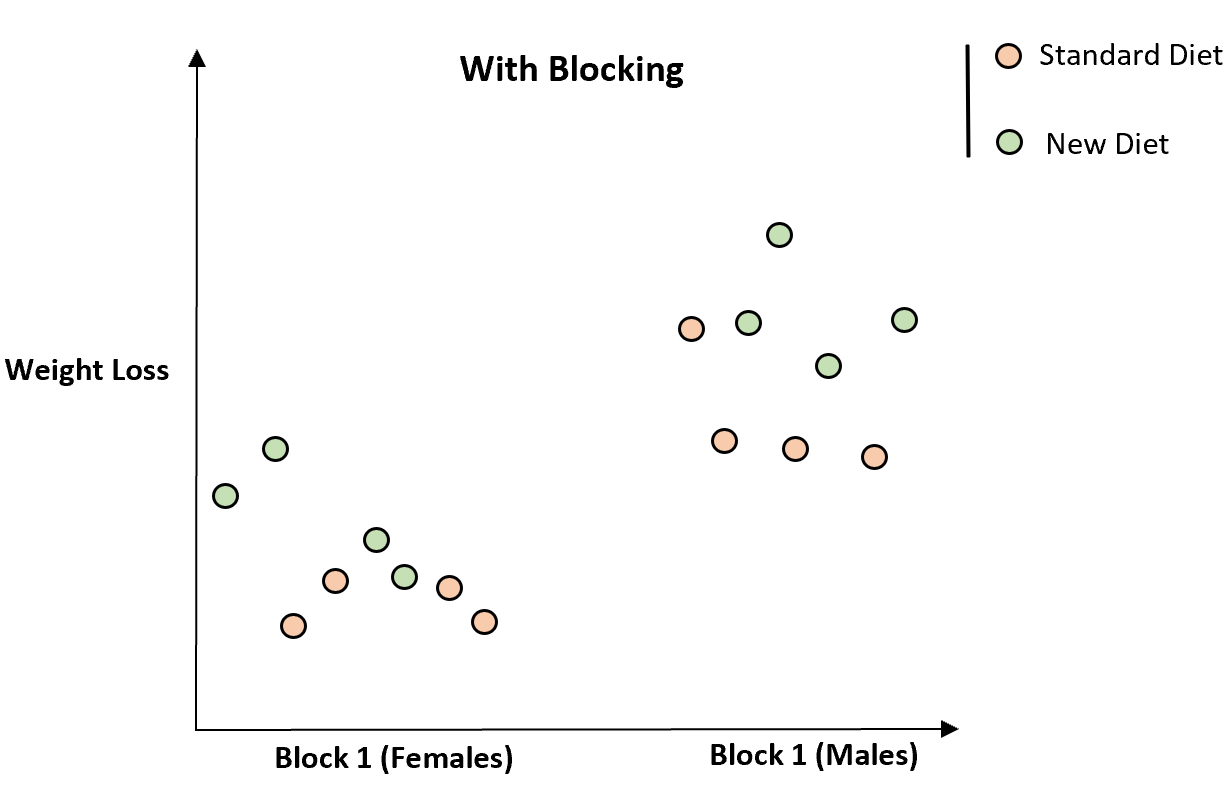
Replication
- Replication: refers to the process of giving a certain treatment numerous times in an experiment, or even repeating an experiment multiple times. Reduces chance variation.
Designs
Completely randomized design: treatments are assigned randomly to all experimental units or experimental units are assigned randomly to all treatments
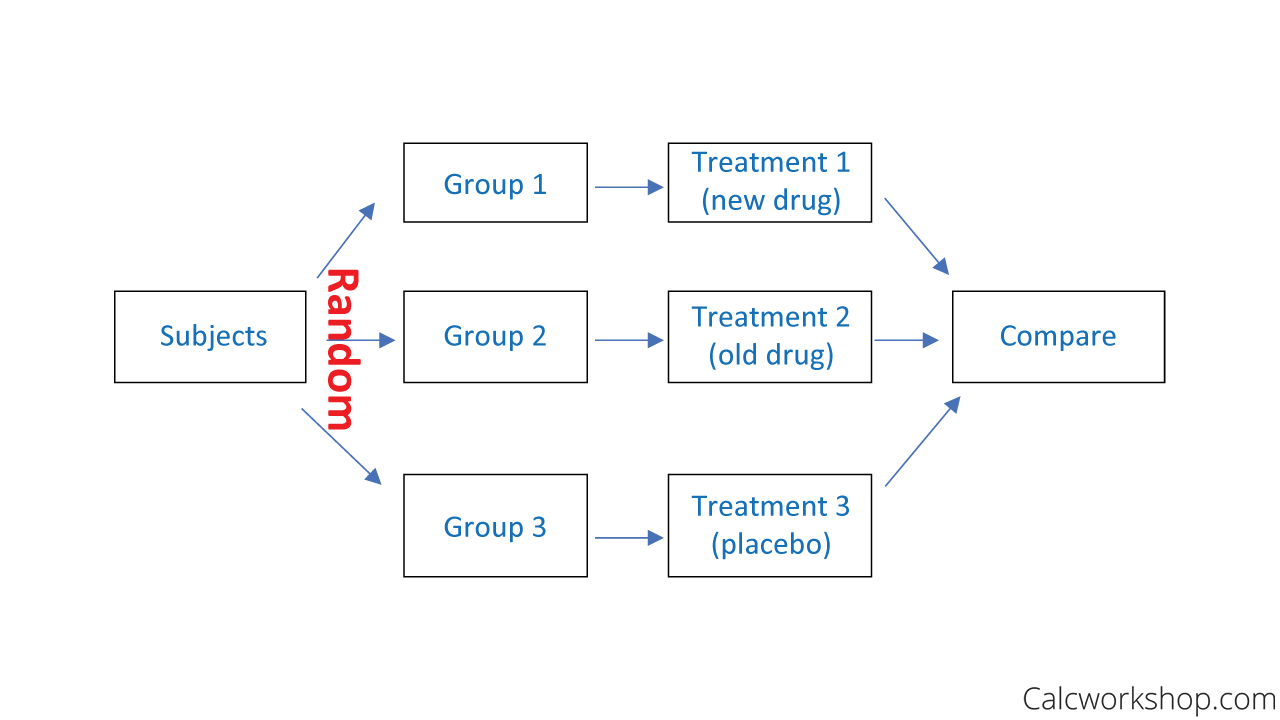
Randomized block design: All experiments are grouped by certain characteristics to form homogeneous blocks, and then a completely randomized design is applied within each block
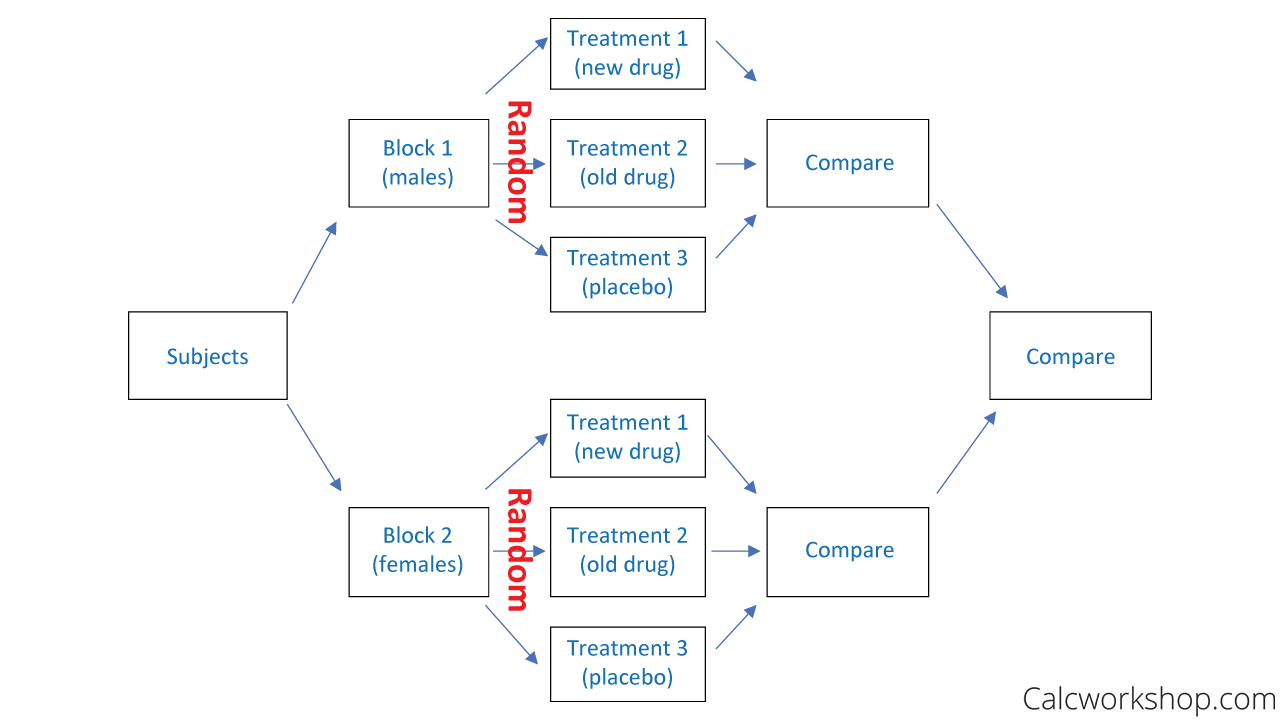
Matched-pairs design: An experimental design where participants in each condition of the experiment are matched according to important variables.
